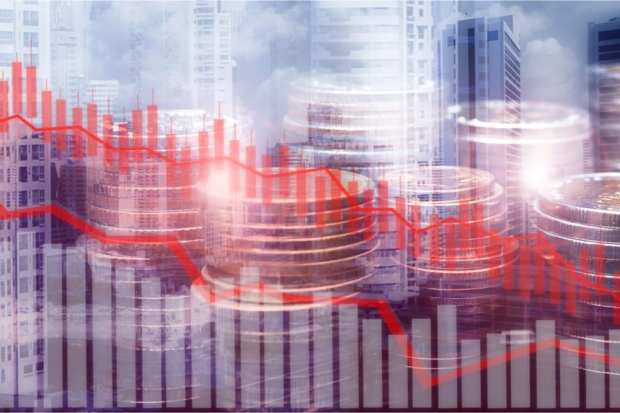Why This Recovery Will Not Be Brought To You By The Letter V

Never before in history have so many people looked to the alphabet to model the shape of their economic future. That the economy has taken a massive downturn is undeniable, as is the fact that at some point in the future (near or distant), the economy is going to recover. What will that recovery will look like? Enter the alphabet, where predictions of “V-,” “U-,” “W-” and (most recently) “L-shaped” recoveries round out the options, with only the “swoosh” recovery model excluded from alphabetical classification.
The “V” is the most desirable recovery description — and the one favored early on by policy makers and economists as the analogy preferred for describing the recovery. That’s a fast drop, a quick stop and a rapid resumption of normal once businesses reopen and commercial life can get back into the swing of things. The “U” and the “W” are both variations on the V, the former with a longer fallow period in the middle followed by a quick resumption of function. The latter indicates a quick but small first recovery, then a small sharp dip followed by a fuller fast recovery.
To date, the V still has some avid advocates. “We will see a V-shaped recovery for two reasons — the historic steepness of the decline in activity, and the unprecedented policy response,” Michael Wilson, chief U.S. equity strategist at Morgan Stanley, wrote in a recent note to investors.
But that confidence is rapidly ebbing away among the experts, and in some cases being replaced by very stark pessimism. According to a new working paper circulated by the National Bureau of Economic Research, the letter of the alphabet the recovery is going to most resemble is an “L” — a big drop, followed by a long period of depressed economic activity created by an employment market that looks very likely to recover slowly.
And while the L is a uniquely sobering take on what recovery will look like, there’s a growing consensus that a V recovery is simply not in the cards. Speaking to the Peterson Institute for International Economics, Federal Reserve Chairman Jerome Powell warned that the length of the health crisis and the damage wrought so far raises “longer-term concerns” and makes the odds of a quick, V-shaped recovery extremely low. In fact, he sees it as bordering on non-existent based on the “lasting damage” to an economy’s productivity that has already been done.
“The recovery may take some time to gather momentum, and the passage of time can turn liquidity problems into solvency problems,” Powell said. Insolvency problems, he noted, will ultimately smother small and medium-sized firms, which in turn will “limit the strength of the recovery when it comes.”
“We ought to do what we can to avoid these outcomes, and that may require additional policy measures,” Powell said.
But as Karen Webster noted in a recent commentary, policy measures likely won’t be enough on their own to stimulate a V or even a U-shaped recovered at this point. Reigniting the economy is going to be something like an experiment in platform dynamics on steroids. She said a full recovery will require buy-in and critical mass from three separate groups of stakeholder groups with largely separate needs sets — businesses, customers and employees.
“Businesses must be convinced that demand will be sufficient enough to rehire their workforce and cover their costs before they run out of cash,” Webster wrote. “The workforce must be convinced that it’s safe to return to work — from both a job security and public health standpoint.”
And the consumers — who PYMNTS data now reflect are eight times more afraid of dying from COVID-19 than losing their jobs or their nest eggs as a result of it — have to be persuaded as well. They must believe that the rewards of real-world commerce are worth the frictions and the risk to health, outweighing what they’d receive if they eschew a physical experience for the digital ones they’ve become accustomed to over the past two months.
And, according to PYMNTS most recent data on the subject, that consumer bar is going to be a very high one to clear. Over a quarter of respondents reported being totally uninterested in activities outside their houses as of yet, while 46 percent of consumers report being only somewhat or slightly interested in going out again.
There are elements of the outside world consumers miss, to be sure. Seeing friends and family in person and eating in restaurants lead the wish lists of consumers we spoke to. But nostalgia aside, the data also pretty clearly demonstrate that at the consumer level, no one is anticipating getting back to the old normal anytime soon.
On average, consumers now expect the COVID-19 commerce era to carry on for 225 days, or a little over seven months. With consumer enthusiasm so low, it’s hard to imagine businesses will feel much in the way of convinced that demand will be sufficient to cover their costs. Or that workers will feel much pressure to rush back to firms where their health may well be secure but their future employment seems not to be.
So, a V-shaped recovery is perhaps deeply to be desired, but looking increasingly like it’s not in the cards. Which means the ABCs of recovery might not be quite so simple — or predictable — as anyone is currently imagining, and the future of recovery might not conform to any shape or pattern than anyone is familiar with thus far.
